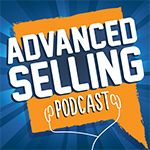Since we train business sales organzations, I thought I’d devote one post to the notion of sales training. (This applies not just to the sales team, but to the technical team, the executive team and the customer service team. All need good training).
I realize a lot of sales managers (VPs of Sales and the like) read this blog. And I also know many of you are looking for ways to train your people. Moreover, I know we aren’t the right sales training company for everyone, so I thought I’d give you some hints on what to look for when you get ready to invest in your people.
–1 Is the sales problem clearly identified? Great question…seldom answered. Because no one wants to look deeper at the real issue. Here’s a tip. When you identify a problem–say, not enough prospecting activity, then look in two places for the cause: a) the mechanical and b) the conceptual.
The mechanical is ‘I don’t know how to do it’ and usually gets back to lack of skills. The ‘conceptual’ means ‘I don’t have the capacity to do it,’ meaning too much fear…poor inner game…lousy self concept. Every sales problem has a ‘conceptual’ component to it. I know many of you hard-hitters think this is psycho-babble. Sorry, but it’s not.
–2 Reinforcement. If you’re going to train, you have to reinforce. You can do this through meetings and phone calls, or, better, you can do it through technology–podcasts, blogs and video blogs. In your business it may be difficult to introduce a topic through the PC, but you can surely reinforce it. I just set up a podcasting service for one of our clients who wanted to get our content out to their large, remote sales force. Podcasting is easy.
–3 Measurement. Inspect what you expect. Most sales programs have very little measurement. We’re sometimes guilty of that as well. Your return on investment will be higher if you inspect behavior and measure results. You can’t just look at how sales training impacts revenue. You have to look at the soft inputs, too. Things like: Are your people having better conversations? Are your people more confident? Is your team discarding prospects from the funnel if they aren’t real? Those are clues too.
If you’re a sales leader, take heed. Some of your competition is using training and professional development as a hiring point. Are you investing in your people? If done properly, investing in sales training will pay back 300-1000% as an ROI. Where else can you get a return like that? Take these three tips and implement them in your world. Or, call me and I’ll walk you through how to do it.
 Calling all Sales Managers: there’s an art to coaching your team after the ride along. In this episode, veteran sales trainers Bill Caskey and Bryan Neale talk to Sales Managers with tips (and things not to do) when coaching after a ride along experience. This episode isn’t about the ride along itself— it’s about what happens when you get back in the car.
Calling all Sales Managers: there’s an art to coaching your team after the ride along. In this episode, veteran sales trainers Bill Caskey and Bryan Neale talk to Sales Managers with tips (and things not to do) when coaching after a ride along experience. This episode isn’t about the ride along itself— it’s about what happens when you get back in the car.
